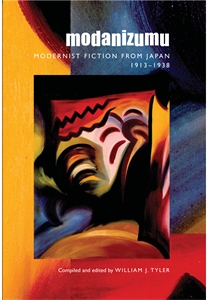Modanizumu: Modernist Fiction from Japan, 1913–1938
On Sale!- About the Book
-
Remarkably little has been written on the subject of modernism in Japanese fiction. Until now there has been neither a comprehensive survey of Japanese modernist fiction nor an anthology of translations to provide a systematic introduction. Only recently have the terms “modernism” and “modernist” become part of the standard discourse in English on modern Japanese literature and doubts concerning their authenticity vis-a-vis Western European modernism remain. This anomaly is especially ironic in view of the decidedly modan prose crafted by such well-known Japanese writers as Kawabata Yasunari, Nagai Kafu, and Tanizaki Jun’ichiro. By contrast, scholars in the visual and fine arts, architecture, and poetry readily embraced modanizumu as a key concept for describing and analyzing Japanese culture in the 1920s and 1930s.
This volume addresses this discrepancy by presenting in translation for the first time a collection of twenty-five stories and novellas representative of Japanese authors who worked in the modernist idiom from 1913 to 1938. Its prefatory materials provide a systematic overview of the literary movement’s salient features—anti-naturalism, cosmopolitanism, the concept of the double self, and actionism—and describe how modanizumu evolved from its early “jagged edges” into a sophisticated yet popular expression of Japanese urban life in the first half of the twentieth century. The modanist style, characterized by youthful exuberance, a tongue-in-cheek tone, and narrative techniques like superimposition, is amply illustrated.
Modanizumu introduces faces altogether new or relatively unknown: Abe Tomoji, Kajii Motojiro, Murayama Kaita, Osaki Midori, Tachibana Sotoo, Takeda Rintaro, Tani Joji, Yoshiyuki Eisuke, and Yumeno Kyusaku. It also revisits such luminaries as Kawabata, Tanizaki, and the detective novelist Edogawa Ranpo. Key works that it culls from the modernist repertoire include Funahashi Seiichi’s Diving, Hagiwara Sakutaro’s “Town of Cats,” Ito Sei’s Streets of Fiendish Ghosts, and Kawabata’s film scenario Page of Madness. This volume moves beyond conventional views to place this important movement in Japanese fiction within a global context: an indigenous expression born of the fission of local creativity and the fusion of cross-cultural interaction.
- About the Author(s)
-
William J. Tyler, Editor
William J. Tyler taught modern Japanese literature at Ohio State University.
- Reviews and Endorsements
-
- [The] twenty-five pieces by a broad range of authors, plus Tyler’s intelligent introduction, [make] this anthology . . . essential reading.
—Japan Times - Tyler has assembled here a wonderfully rich collection of Japanese fiction, a grand total of 25 previously untranslated works. What especially distinguishes this hefty volume from previous anthologies of Japanese fiction in English is its diversity. . . . Whether one agrees with Tyler’s all-inclusive definition of Japanese modernism or not, he has done us all a great service by raising these important issues in such a provocative and entertaining way
—Japanese Studies - William Tyler has assembled a remarkable collection of interwar stories that vividly capture the spirit of modanizumu,an assemblage of free-wheeling attitudes towards the pleasures of the lived life, the vicissitudes of contemporary culture, and the ambiguous nature of human personality, providing in the aggregate a series of glittering glimpses into still another artistic Japan, one far removed both from the earnestness of the preceding Meiji period and the ensuing dark years of the Pacific War. Be prepared to rethink the nature of modern Japanese literature; or better still, simply read these often wondrous tales, some tall, some short, one after the other, and enjoy a remarkable, liberating moment in Japanese literary history.
—J. Thomas Rimer, professor emeritus of Japanese literature, University of Pittsburgh - This is a tour de force that gives readers a full and vivid picture of Japanese literature and its cultural milieu between 1913 and 1938, with smoothly rendered translations of influential works and a thought-provoking critique of how trends and movements during this period have been ‘constructed’ and ‘reinvented’ ever since. The book will also serve as an important reference for those studying twentieth-century Japanese literature.
—Steve Rabson, professor emeritus of Japanese, Brown University - Modanizumu is the first anthology of Japanese modernist prose, and as such it will allow readers to become familiar with a number of fine writers from the modernist period who are little known outside Japan. It also gives the first systematic and comprehensive overview in English of Japanese modernist prose as an experimental phenomenon flourishing in the first few decades of the twentieth century but continuing to exercise widespread influence on Japanese fiction throughout the modern and contemporary periods. The editor’s introductory materials provide an original and significant definition of Japanese modernist literature, and his discussion of issues relevant to comparatists makes the book a wonderful bridge between Japanese and Western modernisms.
—Janet A. Walker, professor of comparative literature, Rutgers University
- [The] twenty-five pieces by a broad range of authors, plus Tyler’s intelligent introduction, [make] this anthology . . . essential reading.
- Supporting Resources
-










